
Albert Ernest Doyle was a prolific architect in the U.S. states of Oregon and Washington. He opened his own architectural practice in 1907. From 1908 to 1914, he partnered with William B. Patterson, and their firm was known as Doyle & Patterson.

Ellis Fuller Lawrence was an American architect who worked primarily in the U.S. state of Oregon. In 1914, he became the co-founder and first dean of the University of Oregon's School of Architecture and Allied Arts, a position he held until his death.

Lee Arden Thomas (1886–1953) was an architect in Bend and Portland, Oregon, United States. He graduated in 1907 from Oregon State University. He completed many projects in Bend, often partnering with local architect Hugh Thompson. His work in that area includes the planning for Bend Amateur Athletic Club Gymnasium (1917–1918), Redmond Union High School, and the Washington School in Corvallis.

William Christmas Knighton was an American architect best known for his work in Oregon. Knighton designed the Governor Hotel in Portland, Johnson Hall at the University of Oregon, and the Oregon Supreme Court Building and Deepwood Estate in Salem. He served as Oregon's first state architect from 1911–1915, appointed by Governor Oswald West. By 1915, Knighton had designed ninety building projects as state architect. In 1919, Knighton was appointed by Governor Ben Olcott as the first president of the Oregon State Board of Architectural Examiners, a position he held until 1922. In 1920, Knighton was elected the sixth president of the Oregon Chapter of the American Institute of Architects. He remained on the chapter's board of trustees for several years and was chair of the Chapter Legislative Committee into the 1930s.
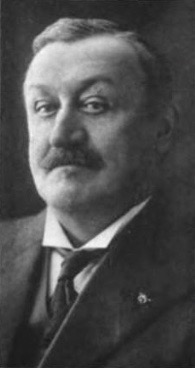
Emil Schacht was an architect in Portland, Oregon. Schacht's work was prolific from the 1890s until World War I and he produced commercial buildings including factories and warehouses as well as residential projects, hotels and theatres. He is known for his craftsman architecture style homes and was a founding member of the 1902 Portland Association of architects.

The Broadway Hotel is a historic hotel building located in Portland, Oregon, built in 1913. As of 2009, it was managed as single room occupancy apartments under the name Helen M. Swindell Apartments. It is listed on the National Register of Historic Places. It was designed by Portland architect John Virginius Bennes's Bennes and Hendricks firm.

Morris Homans Whitehouse was an American architect whose work included the design of the Gus Solomon United States Courthouse in Portland, Oregon.
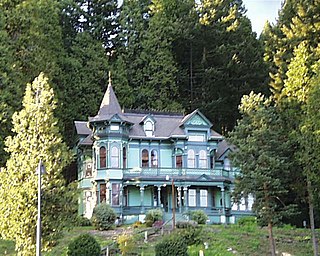
Walter David Pugh was an American architect based in Salem, Oregon, United States.
Tourtellotte & Hummel was an American architectural firm from Boise, Idaho and Portland, Oregon.

Povey Brothers Studio, also known as Povey Brothers Art Glass Works or Povey Bros. Glass Co., was an American producer of stained glass windows based in Portland, Oregon. The studio was active from 1888 to 1928. As the largest and best known art glass company in Oregon, it produced windows for homes, churches, and commercial buildings throughout the West. When the firm was founded in 1888, it was the only creative window firm in Portland, then a city of 42,000 residents.
Edgar Marks Lazarus was an American architect who was prominent in the Portland, Oregon, area for more than 45 years. He was best known as the architect of the Vista House on Crown Point in the Columbia River Gorge.
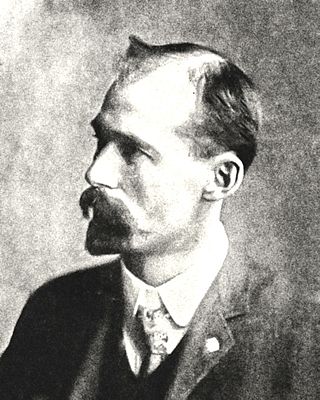
Joseph Jacobberger was an American architect based in Portland, Oregon. He partnered with Alfred H. Smith in the firm Jacobberger and Smith.
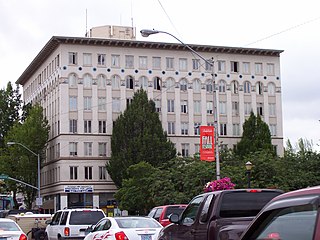
Houghtaling & Dougan was an American architectural firm based in Oregon. It was a partnership of Chester A. Houghtaling and Luther Lee Dougan. A number of their works are listed on the U.S. National Register of Historic Places (NRHP).
Doyle & Patterson was an American architectural firm in Portland, Oregon, from 1908 until 1914. It was a partnership of the prolific architect Albert Ernest Doyle (1877–1928) and the architect William B. Patterson.

Charles Henry Burggraf (1866–1942) was an American architect primarily working in Salem, Oregon, and Albany, Oregon, who also worked in Hastings, Nebraska, and in Grand Junction, Colorado. A number of his works are listed on the U.S. National Register of Historic Places (NRHP).
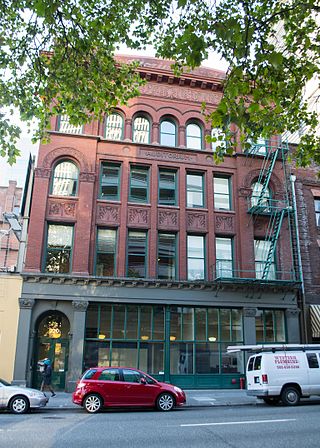
The Auditorium and Music Hall is a historic building in Portland, Oregon, in the United States, designed by English architect Frederick Manson White. It was built by Emil C. Jorgensen and was completed in 1895. The building is listed on the National Register of Historic Places (NRHP).

The John Virginius and Annice Bennes House is a house located in the Arlington Heights section of Portland, Oregon designed by prominent architect John Virginius Bennes for he and his wife, Annice. The house is registered on the National Register for Historic Places.

The Page and Son Apartments is a tenement building located in Portland, Oregon designed by prominent architect John Virginius Bennes. The structure is listed on the National Register for Historic Places.

The Poultry Building and Incubator House is a house located on the Oregon State University campus in Corvallis, Oregon, designed by prominent architect John Virginius Bennes. The house is registered on the National Register for Historic Places.

Glenn Stanton (1895–1969) was an American architect in practice in Portland, Oregon, from 1925 until 1969. From 1951 to 1953 he was president of the American Institute of Architects.





















